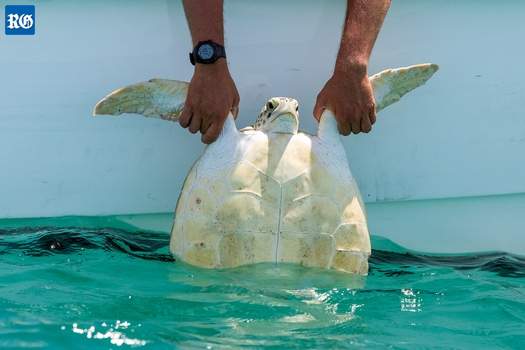Recent News
Azu Beastro: Introducing Arugula and Chef Sam CrewWednesday, July 01, 2015
From the fresh local farm produce, to the fresh herbs being grown right on the café’s patio overlooking Harrington Sound, diners at the Azu Beastro are certain to be delighted with the delectable options being created by the restaurant’s new concession holder, Arugula.
The Trunk Island Campaign: Investing in the Future
Wednesday, July 01, 2015
It was once unusual for the formal education of children to occur anywhere besides within the four-walls of the classroom, but today, there is a broader view on how teaching should occur, taking into account the whole child and diverse learning needs.
Creating Innovative Classes to Enhance School Curriculum
Wednesday, July 01, 2015
There has been increasing interest in educational circles in developing interdisciplinary STEM (Science, Technology, Engineering and Math) programmes that not only teach students about scientific method in the classroom, but also how it can be applied in real life experiences.
Curator’s Corner
Wednesday, July 01, 2015
Firstly, we’d like to thank you for your patience over the last several months. The replacement of the Aquarium roof has gone very well and we’re extraordinarily happy with the end product.
Scholarship recipient tracking Longtails
Wednesday, July 01, 2015
BZS/Steinhoff Scholarship recipient Miguel Mejias, a Biology student at Memorial University in St. John’s, Newfoundland, has been undertaking some very interesting and exciting research on White-tailed Tropicbirds (Phaethon lepturus catesbyi), better known to most Bermudians as the “Longtail”.
About
GovernanceAbout Us
Newsletter
Latest News
Gift & Bookstore
Contact
General Inquiries
info@bzs.bm
Latest News
All the latest updates and news from the Bermuda Aquarium, Museum, and Zoo, one of Bermuda's leading visitor attractions!
Owain Johnston-Barnes
Published Jun 27, 2017 at 6:26 pm (Updated Jun 27, 2017 at 6:26 pm)

Nice day for a swim: A turtle caught in the Great Sound in the advance of America’s Cup
is returned to the West End (Photograph provided)
Almost 50 turtles caught in the Great Sound during the America’s Cup have been released after being temporarily held in Harrington Sound.
In May, the Ministry of the Environment announced it would be relocating turtles to prevent the animals from being struck by boats during the course of racing.
According to a spokeswoman, a total of 38 green turtles have been placed back in Western waters, while eight green turtles and three hawksbill turtles were released in the East End in mid-June and are expected to be making their way west.
“When the sea turtles were collected in late May, they were measured, weighed, photographed, microchipped and numbers were painted on their shells,” the spokeswoman said.
“It is estimated that the turtles ate 50 or more heads of lettuce per day while enclosed near the Bermuda Aquarium, Museum and Zoo. They were fed at the deepest point of the enclosure by submerging trays of lettuce arranged to mimic sea grass beds. In this way, human interaction was minimised to prevent habituation,
Ian Walker, the principal curator and veterinarian at BAMZ, said: “While protection of the turtles from heightened marine traffic was the principal aim, we were able to closely monitor this group of green sea turtles. That has added information to our database that some turtles are dealing with very high parasite burdens.
“BAMZ keeps detailed records of all turtles that pass through our hands, whether this group or the turtles brought to us by members of the public for treatment or necropsy. Based on all our data, we think that disease resulting from high parasite burdens is becoming increasingly common.
“As high parasite burdens, often related to malnutrition, is now one of the leading causes of turtle morbidity and mortality in Bermuda, BAMZ is actively pursuing research to better understand and deal with this issue.”
Before release, the turtles were weighed and had flipper tags attached. A very small DNA sample was taken from each individual turtle before groups of turtles were taken by boat to the area where they were first collected in the Great Sound. This is so that these individual turtles can be readily identified if they are returned to BAMZ.
The spokeswoman said the turtles were transported on their backs on beds made from swimming noodles to keep them from moving, and were kept cool and hydrated in transit.
“Now that they are back in the Great Sound, their purpose-built, temporary enclosure will be dismantled,” the spokeswoman added.


